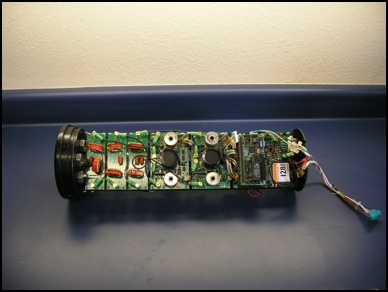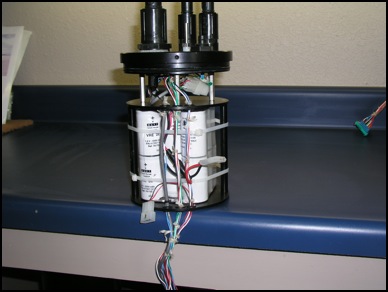This re-design of the TAPS-6 allowed me to combine some circuits that worked well in the TAPS-8 instruments with an upgrade of the elderly CPU card. Replacing the CPU card allowed me to speed up serial I/'O by a factor of 4 and to increase memory by 64 times. The picture below shows the new arrangement of PC cards -- along a mounting rail instead of horizontally stacked. This side shows three transducer tuning cards on the left, two transmitter cards (each transmitting on one of two channels), and the CPU/IO card. Note the CF-RAM card, 128 MByte in this case.

Increasing the data memory size allowed a number of "improvements" in the TAPS operation. For instance, I elected to store all the operating programs in the CF-RAM card and only store a generic program in the CPU's Flash memory to facilitate loading the appropriate program into non-volatile RAM for execution. This meant that new programs could be written and linked into the operating system rather easily. Also, since each operating mode could occupy RAM exclusively, there was no need for the sometimes awkward sharing of code segments -- each program could be optimized for it's particular mode of operation. One mode that was especially fun to write was a CAST mode variant that stores all the raw echo amplitudes in memory. This uses data RAM a lot faster but allows the user to look at echo statistics in some detail in the processing stage.
The battery endcap is unchanged from the TAPS-6 original except that we no longer could get the nice extruded polyurethane battery covers and had to use (ugh) tie-wraps.




